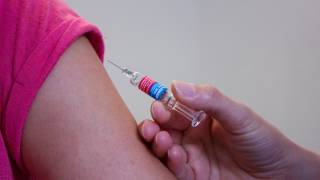How to Confront Fake Vaccine News on Social Media

Concern about vaccine hesitancy has grown dramatically in the last few years, with the World Health Organization recently flagging it as a top global health threat.
And, vaccine fake-news is widespread across social media networks.
A new study published on October 22, 2019, finds that vaccine-promoting organizations must deploy a range of strategies, including fostering trust and communicating simply.
This is hardly surprising given worldwide outbreaks of measles and other vaccine-preventable diseases, explains the study authors Maryke Steffens and Adam Dunn, in a related press release.
The challenge is knowing when and how to address vaccine misinformation without accidentally amplifying it.
In total, we interviewed 21 participants from 17 organizations about fake vaccine news.
At the top of their list was the pervasiveness of vaccine misinformation. These organizations use a sophisticated array of strategies to confront this issue.
Our participants asserted that amplifying the pro-vaccine voice—by building their online presence and boosting the visibility of like-minded organizations—was necessary to counterbalance misinformation and the voice of activists on social media.
Based on our study’s findings, we have made recommendations to vaccine-promoting organizations to help them respond to misinformation on social media.
- When countering misinformation, avoid explicitly repeating the misinformation—this may inadvertently strengthen it in the audience’s memory. Emphasize the correct information instead.
- Offer information and answer questions in an honest and forthcoming way. Acknowledge risks. This can help decrease perceptions of risk and build trust, which is key when engaging with people who lack confidence in vaccination.
- While conveying facts is important, be cautious about overloading audiences with complex information. Complexity can reinforce misinformation, especially if the inaccurate narrative is simple and compelling.
- Offer your audiences’ information that is straightforward and accessible.
- While it can be tempting to combat misinformation with facts, facts may not be enough.
- Offering non-judgemental support can also be valuable, as can story-telling and anecdotes about positive experiences of vaccination.
- Avoid antagonistic exchanges with anti-vaccine activists. Public arguments may send the erroneous signal that the value of vaccination is in dispute when it is not.
- Keep interactions with anti-vaccine activists brief, factual and polite.
- Bear in mind that not all negative comments come from anti-vaccine activists. Hesitant parents can have real questions about safety. Labeling them anti-vaccine risks losing trust with this important audience.
Finally, be aware of opportunities to influence the silent audience.
It may be less resource-intensive to delete or hide offending posts rather than engage with misinformation on social media.
However, when done in light of the suggestions above, responding to misinformation may influence silent audiences.
When dealing with vaccine misinformation on social media, organizations need to balance the potential benefits of directly responding to the risks and the amount of effort required.
In conclusion, we recommend that communicators consider directly countering vaccine misinformation because of the potential influence on their silent audience, such as those observing, but not openly commenting.
Refutations should be straightforward, succinct and avoid emphasizing misinformation.
Finally, organizations could enhance vaccine promotion and their own credibility on social media by forming strong links with organizations sharing similar values and goals.
No conflicts of interest were disclosed.
Vaccine news published by Precision Vaccinations
Our Trust Standards: Medical Advisory Committee

























